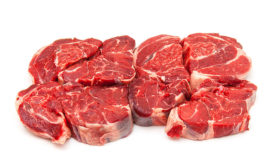Meat and Poultry Processing
Ground turkey and chicken dark meat do particularly well as consumers turn to dining at home.
Read More
Podcast
MeatsPad podcast with Dr. David Gerrard, Virginia Tech
Dr. Gerrard, department head of the Department of Animal and Poultry Sciences, discusses the factors that determine meat taste, tenderness and quality.
December 23, 2020
Higher Education | Steak Discoloration
Novel probe-type oxygen sensor to measure oxygen consumption in beef steaks
December 15, 2020
Consumer Trends | Looking Ahead to 2021
2021 Consumer Trends Report: looking ahead to 2021
Consumer Behavior and trends continue to change along with the pandemic.
Read More
Product Focus | Charcuterie
Charcuterie becomes a trending topic
More consumers are developing a taste for the time-honored tradition of dry-cured meats.
Read More
Cover Story | Bertolino Foods
Bertolino Foods finds a new home
A long-time Boston processor brings decades of tradition under one roof.
Read More
Tech | Supplier's Perspective
Fleet life cycle cost management & e-commerce strategies are powering food distributors through 2020
Read MoreMarket Snapshot | Animal Slaughtering and Processing Production
Pandemic wreaks havoc on market predictability
Read MoreStay ahead of the curve. Unlock a dose of cutting-edge insights.
Receive our premium content directly to your inbox.
SIGN-UP TODAYCopyright ©2024. All Rights Reserved BNP Media.
Design, CMS, Hosting & Web Development :: ePublishing













